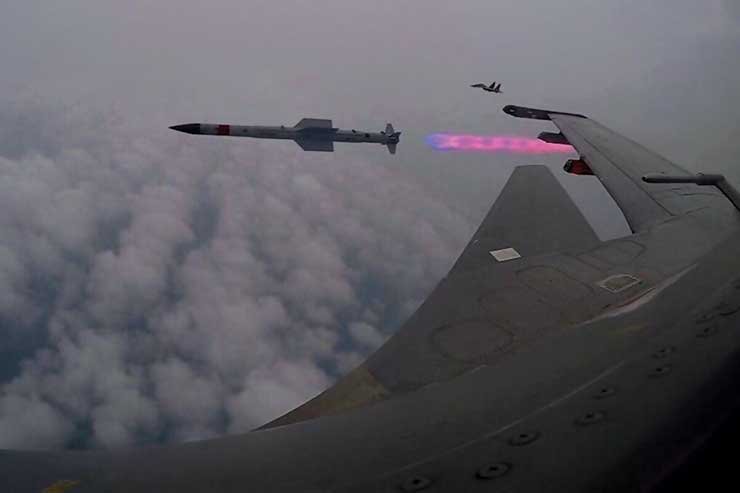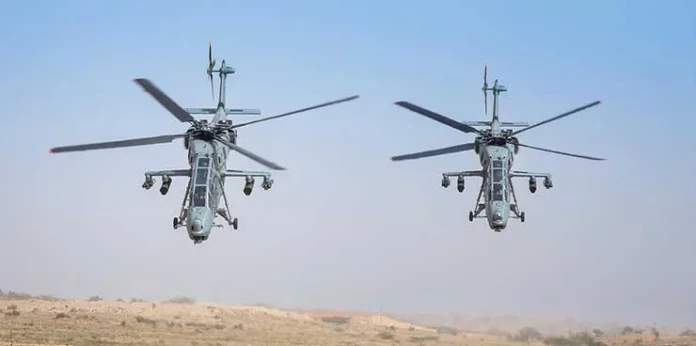This October 8th the IAF completes 90 years of glorious service to the nation. The past nine-decades is a saga of critical contribution to nation-building, warfighting, support to civil administration, air defence, international cooperation and peace keeping, military diplomacy, and deterrence of adversaries. The demand on these roles of the IAF have increased substantially in recent decades. Kargil to Balakot and Ladakh exemplify the value of the IAF as a critical tool of state power. In the 21st century, aerospace power has emerged as the critical tool of deterrence and power projection. The ability of the IAF to provide an array of choices to the national leadership depends on its force structure and the pace of modernisation. IAF’s 100th anniversary is just ten years away and there are, as Robert Frost said, miles to go. Modernisation is a continuous process. Sustaining the optimal force structure despite the delays of modernisation should remain the paramount task.
This is, however, a challenge as the success of this endeavour depends significantly on political, financial, industrial, and external factors coming together. The IAF can only influence these factors, but it is the political leadership that exercises control and hence, should make the right decisions.
The induction of the Light Combat Helicopter (LCH) this week is good news on many counts – it is a ‘made in India’ weapon system that includes design, development, and manufacture. IAF’s role in supporting this development is enormous. What is more important is the fact that the LCH is the result of a right process of derivative development. It flows from the ALH experience and its basic design. The first prototype of the LCH was shown at the Bangalore Aero India show in 2007. That it entered series production in 15 years is a creditable achievement. In the past India has been hampered by disjointed product developments leading to huge time and cost overruns besides non-fructification. Continuity and linkage with the first successful product are the essence of successful strategy.
There are serious concerns to be addressed. For the first time, the IAF’s fighter force strength is set to go below 30 squadrons this year. This is reflective of various governments’ inability to ensure quick decision-making, provide the necessary and timely budgetary support, and more importantly the lack of long-term strategy. It would be a herculean task for the IAF to recover its strength to the authorised 42 squadron fighter force within the next decade without a massive support from the government. Although other elements in terms of airlift capability in its transport aircraft and helicopters, missiles, radars, UAVs, and communications are good, the fighter and bomber force strength remains critical to its offensive and deterrence capabilities. Given the fact that India faces an aggressive and modernised PLA across the Himalayas and over the sea, and an unstable Pakistan where the military continues to wield effective power, India cannot afford to take things lightly. A strong military with demonstrated capabilities for deterrence and power projection is vital for India to play an effective role in the current unstable world order, for which the IAF is the most effective sword arm for India.
The world is now in a flux with conflict raging in Ukraine over the last eight months, and the potential for conflict in the South China sea remaining high. Russia’s Special Military Operations in Ukraine since February 24th, and the recent counter-offensive success by the Ukrainian military highlights significant military and strategic lessons in regard to the employment of air, space, and cyber power. The lessons that the IAF and our national leadership should derive are vital in the context of how India would use its air and space forces in the future. This war has shattered many myths long held as imponderables in the national security domain. It is certain that IAF leadership is already examining many of these issues in their analysis. Let us look at some of the significant issues/questions that come to the fore in this conflict.
Ever since the 1971 war we have been accustomed to the idea that future wars will be short, swift, and decisive affairs. This idea got strengthened and became an imperative through technological developments such as precision, reach, and communications. Our entire planning and even budget allocations for modernisation and force structure sustenance have been influenced by this belief of short, swift, and decisive wars. The corollary to this myth is that a major war is unlikely. The ongoing war in Ukraine has shattered this belief and demonstrates the reality of future wars that can be tedious, long-drawn out, grinding and hybrid, despite the overarching impact of air and space capabilities. The short war philosophy has been the result of USA’s intervention wars of the last three decades against smaller and weaker nations. The Ukraine conflict is far more complex it is effectively a war between Russia and the West, with Ukraine as a proxy. This is effectively a peer-to-peer war in a nuclear backdrop and hence, the war is protracted and involves significant attrition. India’s adversaries present a similar environment today.
Constraints on air power can be counterproductive. Russia’s limited use of its aerospace power is inexplicable. This may be due to the constraints imposed by its political leadership for a limited operation with focus on minimum civilian damage. The contrast with the West is glaring as the USA and its allies have used airpower to devastating effect with little concern for civilian deaths or infrastructure destruction in the former Yugoslavia, Iraq, Afghanistan, Libya, and Syria. Excessive constraints on airpower could lead to severe penalties.
The conflict has highlighted the difficulty of achieving and sustaining air superiority even against a significantly weaker air force. The effectiveness of an asymmetric ‘air denial’ strategy for a defender is an important development. Except for the first few days, Russia has not pushed for air dominance. On the other hand, Ukraine as a weaker power has employed the strategy of air denial successfully. Large infusion of short-range air defence missiles and mobile air defence systems have given Ukraine an ability to deter Russian air attacks. This has given significant freedom of manoeuvre for the Ukrainian forces. Due to lack of air superiority, Russia has refrained from using its air force in deep strikes into Ukraine. As a result, Ukrainian infrastructure and logistics hubs remain functional.
Russia’s airpower employment continues to be dominated by Soviet doctrine of using it primarily in support of the land forces. Russian air power has, largely, followed to support its land operations rather than operate independently to destroy Ukrainian war capability. This is clearly limiting the full potential of air power and has strong lessons for India where land force mindset is overwhelming.

Russia has used long-range missiles, including hypersonic missiles to destroy select targets. The hypersonic missile is emerging as a game changer. With greater numbers these missiles and armed autonomous UAVs will transform the concept of counter air and other offensive operations. Numbers and coordinated attacks with strong space and cyber support are critical for success.
Space and cyber power are playing the most critical role in this conflict. Military and commercial satellites are in extensive use for ISR and secure communications. The USA, NATO, and the EU are providing real-time actionable intelligence on Russian forces in terms their deployment, manoeuvre, weaknesses, and accurate targeting. The recent success of the Ukrainian counter offensives is primarily due to space based ISR capabilities and targeting. The sinking of Russia’s flagship of the Black Sea fleet was possible through American space-based intelligence inputs and coordinated action. Predator and Global Hawk UAV operations from neighbouring countries have added to the ISR inputs for Ukraine. Russia’s use of satellites has been equally high but here the numbers are in Ukraine’s favour. However, Russia’s use of EW and cyber warfare tools have been extensive. American cyber support to safeguard Ukrainian command and control and data centres from Russian cyber-attacks has been equally extensive. Use of armed tactical UAVs has been high on both sides. Mini UAVs and autonomous systems like the Turkish Bayraktar, coupled with AI have proved their versatility in multiple applications – scout, armed, surveillance, and kamikaze attacks. However, the subsequent success of Russian tactical air defence against these demonstrates the impact of counter-UAV operations.
This long-drawn conflict highlights the critical importance of supply chain resilience, secure communications and logistics, and the critical importance of air, space, and cyber superiority. An inferior force with reasonable access to air, space, and cyber resources can deny the stronger force the necessary air dominance. Sanctions on Russia is beginning to impact Russia’s production of high-tech platforms and weapons. Supply chain vulnerability, particularly in critical technology areas, could impact the outcome of any future war. This is a significant lesson for the IAF.
India’s effective budgetary allocation for defence modernisation has been in decline for more than a decade. Our political leadership and economists have been advocating for years about the need to downsize the military and reduce defence expenditure. Their indirect argument is that likelihood of a major war is unlikely as diplomacy and political relations would ensure the prevention of war. This is a myth that deserves to be buried particularly after the Galwan clash and the current instability in the world order. Ukraine conflict has demonstrated that numbers matter notwithstanding the focus on quality, innovation, and technology. The overwhelming impact of air, space, and cyber power in current and future wars is the biggest lesson that should be absorbed by the IAF and the government.
As the IAF heads towards its 100th anniversary, the importance of addressing its fighter-bomber force structure short falls, rapid enhancement of its space and cyber capabilities, missiles, AI and autonomous systems is never more urgent now than ever. Indian Air Force, with a high level of space, ISR and cyber capabilities, will be the trident of India’s emergence as a great power.
–The writer is a former Deputy Chief of Integrated Defence Staff for Policy, Plans, & Force Development (DCIDS – PP & FD). He is currently the President of The Peninsula Foundation, a Chennai-based public policy research think tank. The views expressed are personal and do not necessarily reflect the views of Raksha Anirveda
–The writer, a AVSM VM PhD (V) is a former Deputy Chief of Integrated Defence Staff for Policy, Plans, & Force Development (DCIDS – PP & FD). He is currently the President of The Peninsula Foundation, a Chennai-based public policy research think tank. The views expressed are of the writer and do not necessarily reflect the views of Raksha Anirveda






